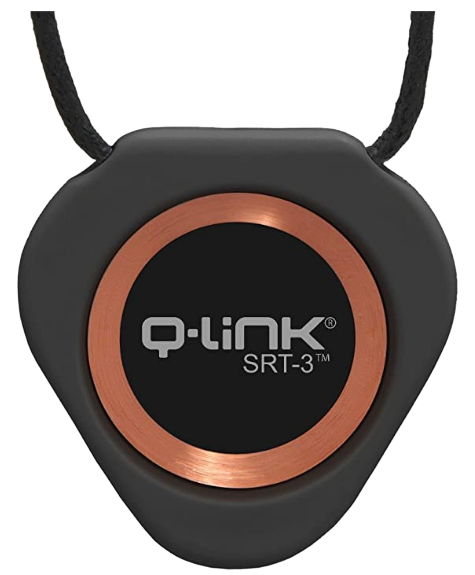Working from home has become the new normal for millions of people worldwide. While the convenience…
10 Surprising Ways To Reduce EMF Exposure in Your Daily Life

In today’s digital age, we are constantly surrounded by electromagnetic fields (EMFs) from our electronic devices such as cell phones, laptops, and Wi-Fi routers.
While the long-term effects of EMF exposure are still being studied, many people are looking for ways to reduce their exposure to these potentially harmful frequencies.
Here, we’ll take a look at 10 simple ways to decrease your daily exposure to electromagnetic fields (EMFs) emitted by various electronic devices around you.
1)) Use A Wired Connection
Instead of relying on Wi-Fi for internet access, consider using a wired connection whenever possible. This can significantly reduce your exposure to EMFs emitted by your router.
Strategies for Using Wired Connections:
- Keep Ethernet cables handy in frequently used spaces to easily switch from Wi-Fi to a wired connection.
- Invest in a quality router with multiple Ethernet ports to allow for several wired connections at once.
- Use cable management solutions to keep Ethernet cables organized and prevent tripping hazards.
- Educate family members or housemates about the benefits of using wired connections to encourage participation.
- Place a small table or shelf near your seating area to hold a router or switch, making it easier to connect devices with Ethernet cables.
2)) Keep Electronics At A Distance
Try to keep your electronic devices such as cell phones and laptops at a distance from your body.
Avoid sleeping with your phone next to your bed or keeping it in your pocket all day.
Tips for Keeping Electronics At A Distance:
- Use hands-free devices such as speakerphones or headphones to minimize direct contact with cell phones during calls.
- Establish a designated spot, away from your bed, to charge phones and tablets overnight.
- Opt for wearable tech that monitors health and activity without needing to be held or carried in your pocket.
3)) Turn Off Electronics When Not In Use
Simply turning off electronic devices when they are not in use can help reduce your overall EMF exposure.
This includes turning off Wi-Fi routers, unplugging appliances, and powering down cell phones.
Examples of Turning Off Electronics When Not In Use:
- Make it a nightly routine to walk through your home and switch off all unused electrical devices before bed.
- Plug electronics into power strips that can be easily turned off to cut power to multiple devices at once.
- Set your computer and monitor to automatically enter sleep mode after a short period of inactivity.
- Turn off your Wi-Fi router at night or when away from home for extended periods.
- Unplug kitchen appliances like microwaves, toasters, and coffee makers when they’re not being used.
4)) Use Airplane Mode
When you’re not actively using your cell phone, consider putting it in airplane mode to reduce the amount of radiation it emits.
This can be especially helpful when sleeping or during times when you don’t need to be connected.
Examples of Utilizing Airplane Mode:
- Switch your phone to airplane mode before placing it on your nightstand to minimize EMF exposure while you sleep.
- Enable airplane mode during work hours to reduce distractions and decrease your daily exposure to EMFs.
- Turn on airplane mode in areas with poor reception to prevent your phone from constantly searching for a signal, thereby reducing its EMF output.
- Use airplane mode when you’re participating in outdoor activities to conserve battery life and cut down on EMF exposure while enjoying nature.
- Encourage children to switch their devices to airplane mode when they are playing games or watching videos that don’t require an internet connection.
5)) Opt For Wired Headphones
Instead of using Bluetooth headphones that emit EMFs close to your head, opt for wired headphones whenever possible. This can help reduce direct exposure to these frequencies.
Pro-Tip: Investing in high-quality wired headphones can significantly enhance your audio experience while reducing your exposure to electromagnetic fields (EMFs).
Unlike Bluetooth headphones, wired headphones do not emit radiation and offer superior sound quality, often with better bass and clarity.
Wired headphones eliminate the need for batteries or charging, ensuring you’re always ready to listen to your favorite music or podcasts without interruption.
By choosing high-quality wired headphones, you prioritize both your health and your audio experience.
6)) Choose Low-EMF Appliances
When purchasing new appliances such as microwaves or televisions, look for models that emit lower levels of EMFs.
Some manufacturers now offer products specifically designed to minimize EMF emissions.
Tips for Choosing Low-EMF Appliances:
- Research appliances online and look for ones specifically labeled as low-EMF. Customer reviews and product specifications can be helpful.
- When possible, visit stores to test appliances and ask sales representatives about the EMF levels of different models.
- Opt for appliances with energy-saving modes, as these often operate at lower power levels, thereby emitting less EMF.
- Before purchasing, inquire about the possibility of returning the product if you find the EMF levels to be higher than expected once at home.
- Consider investing in EMF meters to test your current and new appliances, allowing you to make more informed decisions based on actual data.
7)) Create An EMF-Free Zone
Designate a specific area in your home where electronic devices are not allowed. This can be a bedroom or living room where you spend a lot of time relaxing and unwinding.
Examples of Creating An EMF-Free Zone:
- Choose a room that naturally has less electronic equipment, such as a bedroom or a reading nook, to be your EMF-free zone.
- Implement a ‘no electronics’ rule in this area, including cell phones, tablets, laptops, and electronic readers.
- Enhance the tranquility of your EMF-free zone with natural light, plants, and comfortable furniture to encourage relaxation and disconnection from digital devices.
- Use traditional alarm clocks instead of smartphones to avoid the need for electronics in this space, especially overnight.
- Introduce non-digital forms of entertainment, such as books, puzzles, or board games, to enrich your time spent in this zone without the need for electronic devices.
8)) Grounding Techniques
Some people find relief from EMF exposure by practicing grounding techniques such as walking barefoot outside or using grounding mats inside the home.
These techniques are believed to help neutralize the effects of EMFs on the body.
Examples of Grounding Techniques:
- Walk barefoot on natural surfaces such as grass, soil, or sand to help neutralize positive ions from EMFs and reconnect with the earth’s natural charge.
- Use grounding mats or sheets in your workspace or on your bed to provide a grounding effect while you’re indoors.
- Engage in outdoor activities like gardening or yoga in the park, which can serve as grounding practices and reduce stress.
- Consider grounding footwear, designed with materials that conduct the earth’s electrons, for use when walking on natural grounds.
- Incorporate short, outdoor breaks into your daily routine to stand or walk on natural ground, aiding in the discharge of built-up electrical charge in your body.
9)) Shielding Products
Consider investing in shielding products such as phone cases or laptop pads that claim to block or reduce the amount of EMFs emitted by these devices.
While the effectiveness of these products is still debated, some people find them helpful in reducing their exposure.
Tips for Choosing Shielding Products:
- Be skeptical of extravagant claims and look for products backed by credible scientific research to ensure their effectiveness in blocking EMFs.
- Compare different brands and read consumer reviews to understand the product’s quality and efficacy before making a purchase.
- Consider the size and portability of the shielding product, especially for items like phone cases or laptop covers, to ensure they are convenient for everyday use.
- Verify the specific types of EMF (electric, magnetic, or radiofrequency) the product claims to shield against, ensuring it aligns with your needs.
- Remember that shielding products should be part of a broader strategy for reducing EMF exposure and not relied upon as the sole protective measure.
10)) Limit Screen Time
One of the most effective ways to reduce EMF exposure is simply by limiting the amount of time you spend on electronic devices each day.
Take breaks from screens regularly and engage in activities that don’t involve technology.
Examples of Limiting Screen Time:
- Set specific “no technology” hours during the evening, especially an hour before bed, to help improve sleep quality.
- Use a traditional alarm clock instead of a smartphone alarm to avoid starting your day with screen exposure.
- Engage in non-digital hobbies, such as reading physical books, playing musical instruments, or painting, to reduce reliance on screens for entertainment.
- Implement screen-free meals to encourage conversation and mindfulness during eating.
- Plan outdoor activities, like hiking, cycling, or a simple walk in the park, to naturally spend less time on electronic devices.
Conclusion
Reducing your exposure to electromagnetic fields (EMFs) may seem like a daunting task in today’s technology-driven world, but there are many simple and surprising ways you can minimize your risk daily.
From using wired connections and turning off electronics when not in use to practicing grounding techniques and creating an EMF-free zone in your home, there are plenty of strategies you can implement right away.
By being mindful of how much time you spend on electronic devices and taking proactive steps to limit your exposure, you can protect yourself and your family from potential health risks associated with EMFs.





